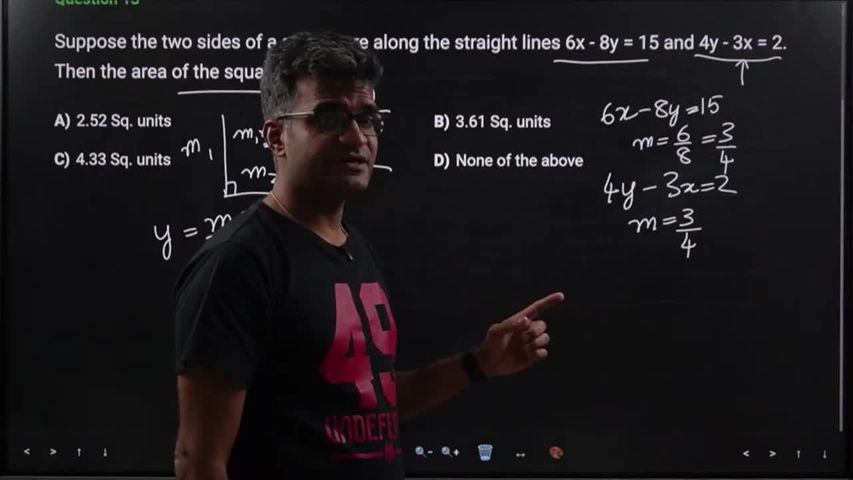Suppose the two sides of a square are along the straight lines 6x - 8y = 15 and 4y - 3x = 2. Then the area of the square is
Solution
The two lines are 4y - 3x = 2 ...(1)
and 6x - 8y= 15
4y - 3x= -7.5 ...(2)
As we can see $$\frac{a_{1}}{a_{2}}$$ = $$\frac{b_{1}}{b_{2}}$$ $$\neq$$ $$\frac{c_{1}}{c_{2}}$$; these two lines are parallel to each other.Hence the distance between these two parallel lines will be the side of the square i.e.
d = $$\frac{|c_{1} - c_{2}|}{\sqrt{a^{2}+b^{2}}}$$ (here a = -3, b = 4 c_{1} = 2 c_{2} = -7.5 )
d = $$\frac{2-(-7.5)}{\sqrt{(-3)^{2}+(4)^{2}}}$$ = $$\frac{9.5}{5}$$ = 1.9
The distance between the parallel lines will be equal to the length of side of the square.
$$\therefore$$ Area of square = (1.9)^{2} = 3.61 Sq. units
Video Solution

Click on the Email ☝️ to Watch the Video Solution
Create a FREE account and get:
- All Quant Formulas and shortcuts PDF
- 170+ previous papers with solutions PDF
- Top 5000+ MBA exam Solved Questions for Free

